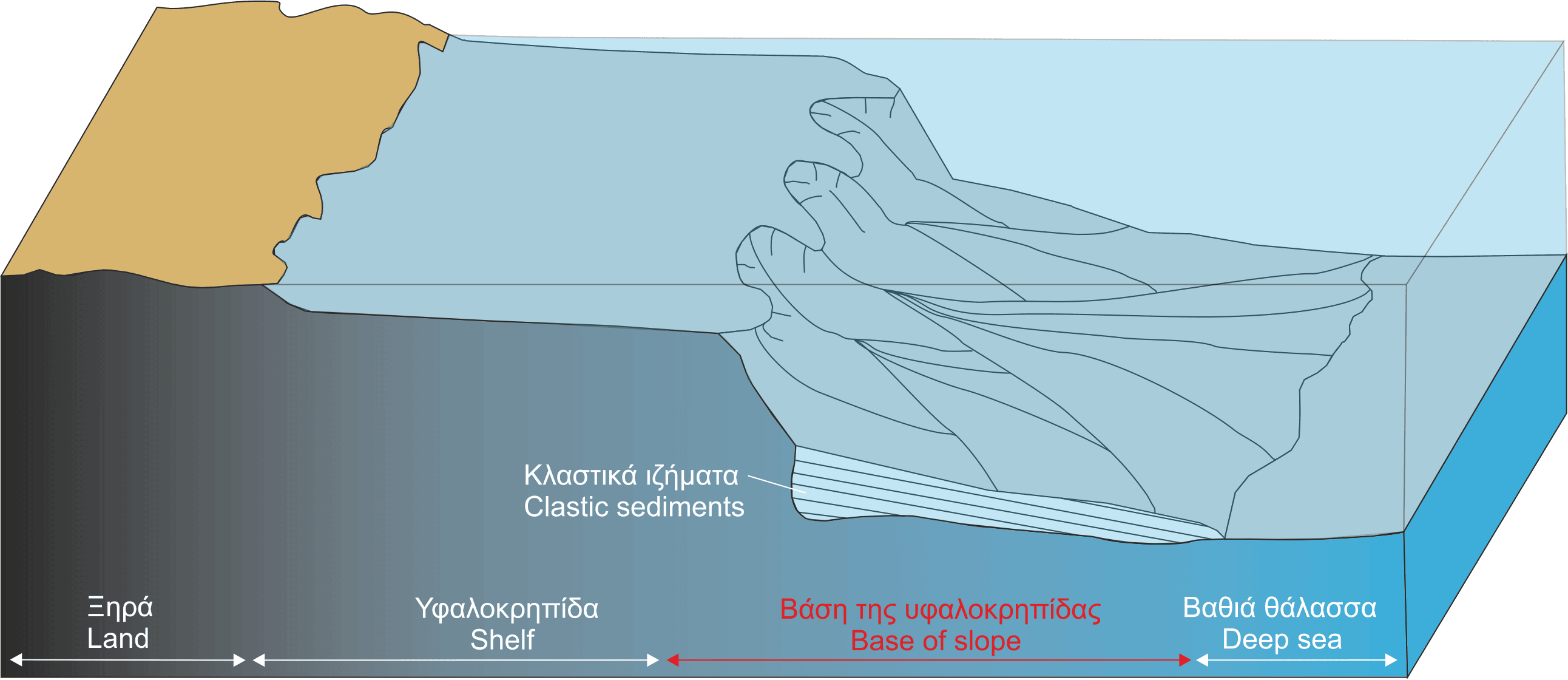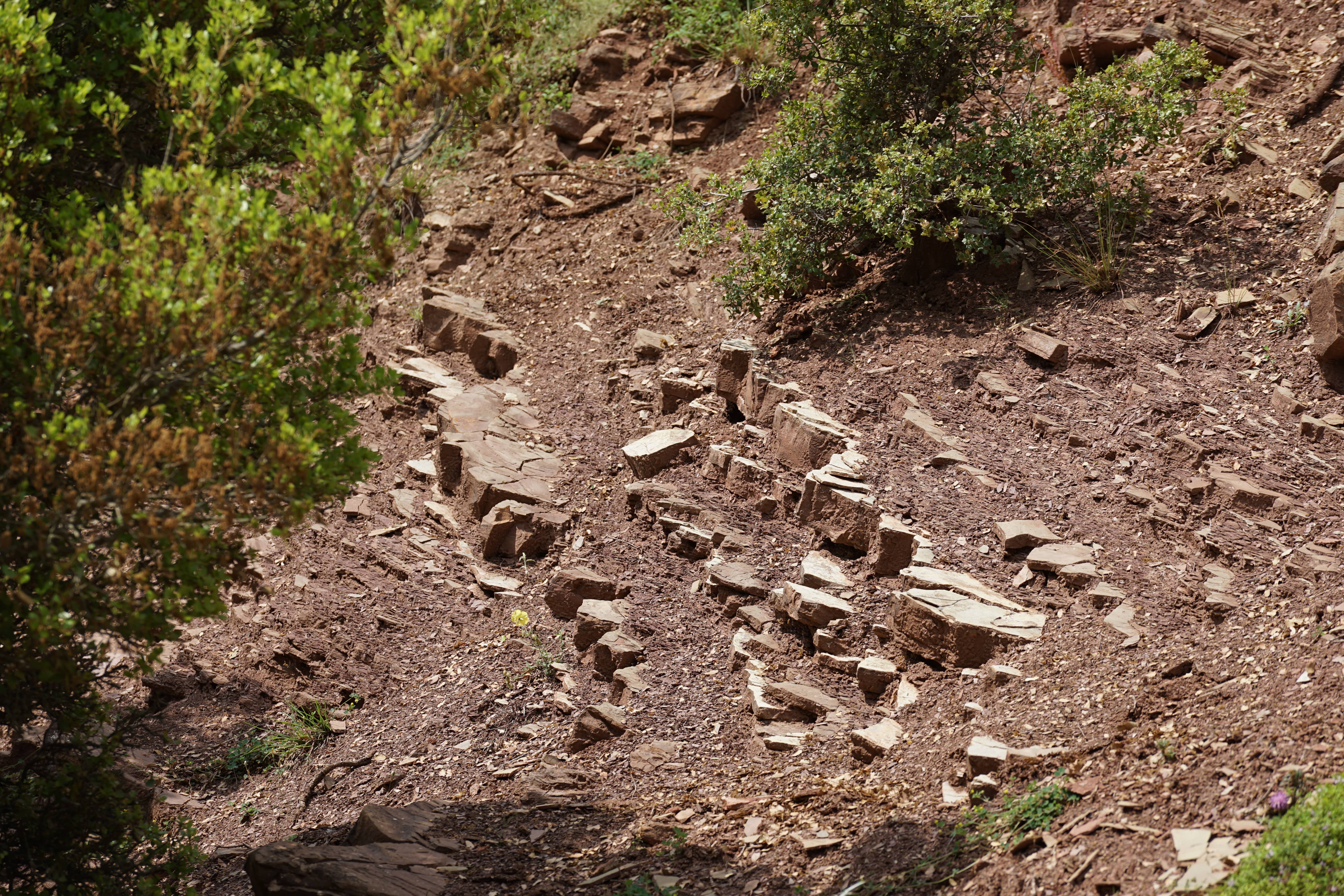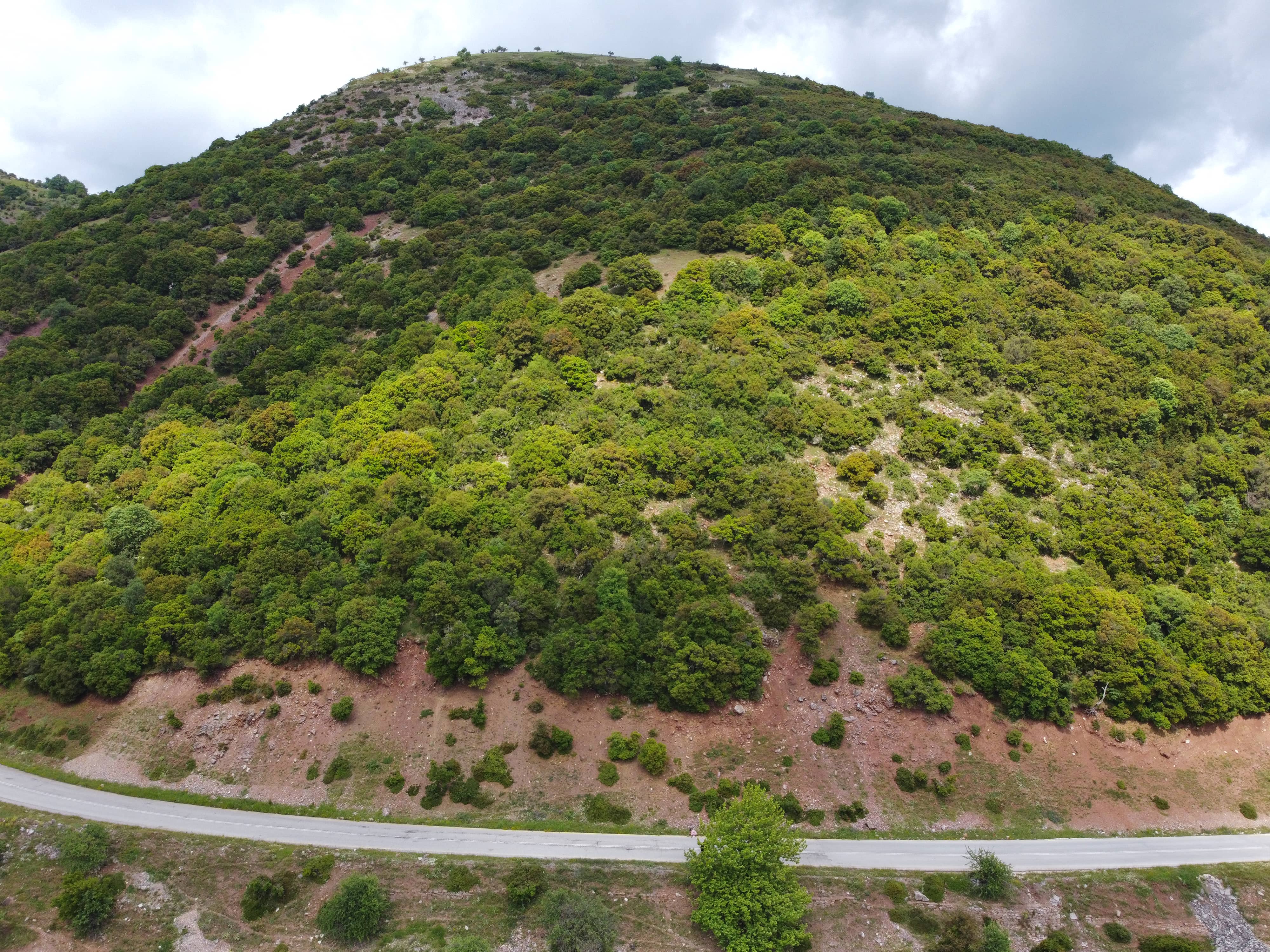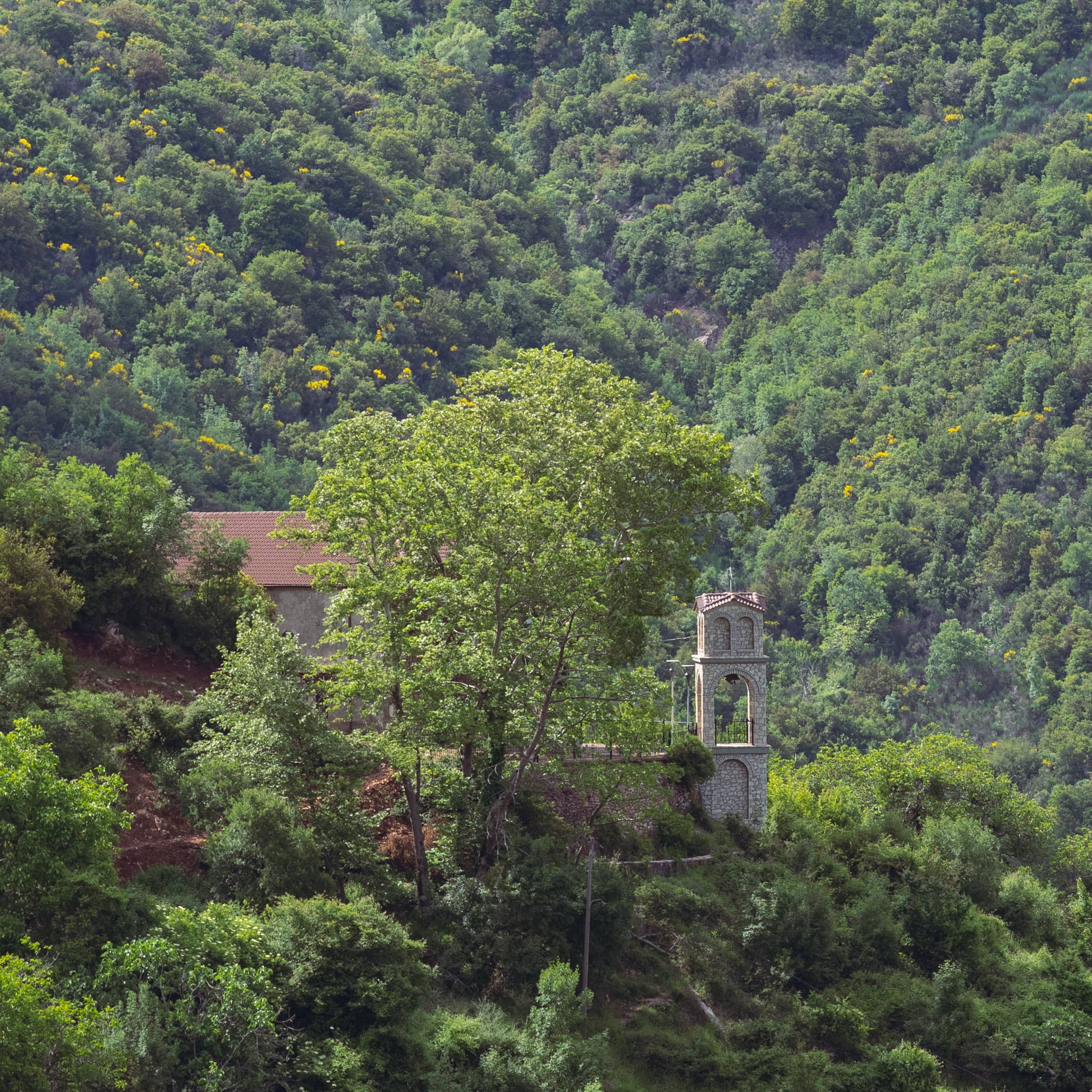THE BAHAMAS OF GREECE
The traditional settlement of Priolithos (older name: Sirmpani) settlement of prisoners during medieval times) is located at an altitude of 800m. A characteristic sediment sequence in this area, offers a journey through time. This area was a deep sea, equivalent to today’s Bahamas in the Atlantic Ocean.
Geoheritage
201 million years ago the the formation of the vast ocean of Tethys started. Part of the bigger Tethys ocean was a “small” ocean, Pindos ocean.
At the first stages of Pindos ocean formation (247-237 million years before), material from the neighboring continent, because of its weight, was moving fast downwards, often through submarine canyons. This material was concentrated at the area where the shallow sea was deepening, similar to what is happening today in the Bahamas.
One such clastic sediment sequence- the only one in the area of the geopark- exists at the Priolithos geosite and is called Priolithos Formation. Similar rocks can be also found in other areas of Greece. The sequence consists of sandstone (compacted sand) with intercalations of pelites and clays (finer grained sediments). The sedimentary layers show cyclic alterations, revealing multiple events of material transportation.
Fossilized marine organisms have been found in these sediments. The most characteristic ones are marine mollusks and teeth of small marine invertebrates which lived exclusively during this period. Their identification allowed us to determine the age of the rocks that contained them.
Bioheritage
The Geosite is near the Natura 2000 Protected Area “FARANGI VOURAIKOU” (GR2320003), which is designated as Special Area of Conservation (SAC) and near the Special Protection Area (SPA) for avifauna “OROS CHELMOS (AROANIA) – FARANGI VOURAIKOU KAI PERIOCHI KALAVRYTON” (GR2320013). The avifauna of the area is of great interest and includes birds such as the Golden Eagle (Aquila chrysaetos), and the Eurasian eagle-owl (Bubo bubo).





